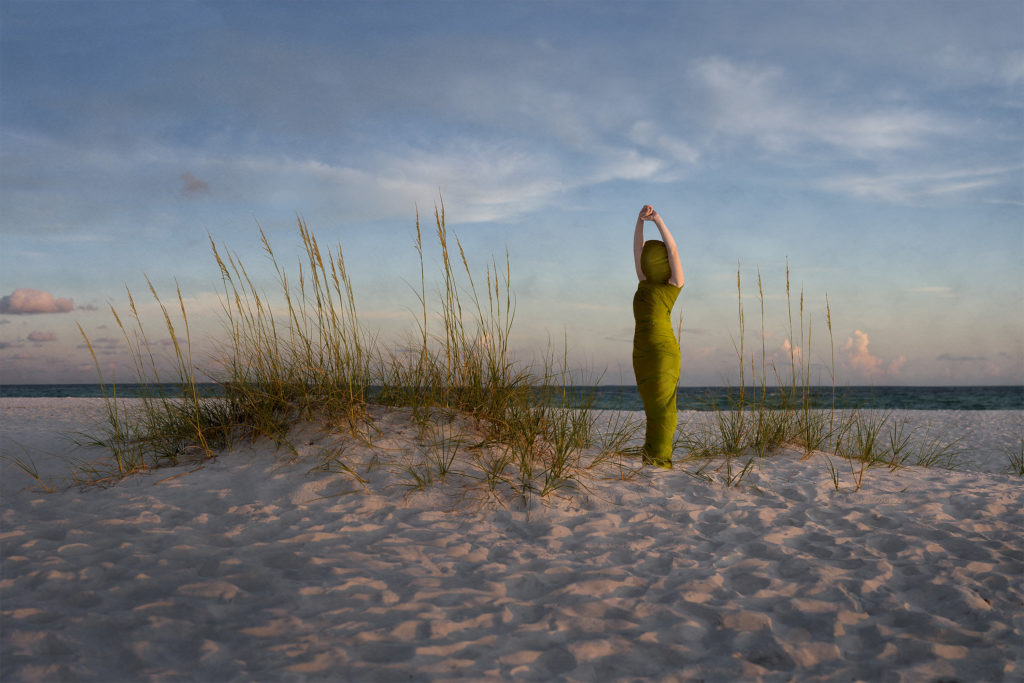The Art of Adaptation
January 8, 2017

By Marisa S. White, owner and founder of Marrisa S. White - Fine Art Photography (formally known as White Sparks Photography)
What skills guarantee entrepreneurial success? I’m sure many CEOs or analysts have identified the “secret sauce.” I could draw a Venn diagram with circles of business prodigies, and within the intersections, words like “optimism,” “grit” and “focus” would certainly serve as a foundation of survival in an ever- changing economy. As someone who has operated three unique business models, my most lucrative skill has become adaptability. Considering my line of work, it’s not hard to understand why.
I am an artist who chose to pursue individual conceptual work after having owned both a payroll-service bureau and a portrait photography business. How did that happen? Suddenly, then slowly. These two specialties might not seem related in terms of the skills necessary to be financially successful, but in my entrepreneurial career they were logical stepping stones, each serving as an opportunity to build my portfolio and prepare me for the transition I’m currently electing to explore.
I attended the University of North Texas to study not only drawing and painting, but also business. My mother didn’t want me “selling my artwork on the side of the road,” understandably, and I used this to my advantage in later years. As most college students do, I developed passions I hadn’t expected, namely one for analog/traditional photography. I fell in love with the dark room, incorporating this medium into my pieces. Upon graduating, I found myself at a crossroads: I wasn’t quite sure how to support myself in the art world, and I needed a job to pay the bills. My classes had been quick to teach me how to create, but they hadn’t explained how I could make a viable career from my work. So, in true survival mode, I put my artistic passions on a shelf and began working for various companies, picking up more skills that would eventually come in handy (although I didn’t know it at the time).
In the next seven years, I sought out opportunities that could utilize my business degree. If I couldn’t use one degree, why not take advantage of the other? I gradually adapted to an office setting through various administrative jobs, and when the opportunity arose to start a payroll business, I took the leap. The company I had been working for had a partnership fallout, and I felt a commitment to serve the clients I had recruited. While my business grew, my dream to create art grew dimmer— or so I thought.
One morning, my husband sat down with me to discuss our future plans. As a member of the armed forces, he has a keen ability to “bloom where he’s planted.” He said his job would move us all over the country in the coming years, and he wanted me to have the ability to pursue my true vocation as an artist. This marked a huge shift in my attitude and focus. I had sacrificed my art to make a steady living, and I wasn’t any further to reaching my career goals.
So, with his support, I sold my company in October 2011 and used the money to fund my tuition at the Rocky Mountain School of Photography for their summer program in 2012. That was the best summer of my life, and the point at which I began to form what is now White Sparks Photography. With the ability to eat, sleep and breathe my art, I challenged myself to push past the “purity” of traditional photography to learn Adobe Photoshop and begin working the digital waters. Had I participated in a program like this immediately out of college, I wouldn’t have been open to exploring new concepts like this one. Thankfully, my experience had strengthened my ability to “trust the process” and gave me permission to be open to new ideas.
Several years—and many moves—later, I have grown into my artistic process of creating conceptual art in the photography medium, and once again, I am at the precipice of change. Luckily, this transition is born out of professional growth and has the potential to scale my business beyond what I had imagined when I first picked up a roll of film.
Recently, my first solo show at a commercial gallery opened in Washington, D.C., marking the next step in my business. The show was titled, “You Better Bring Your Own Sun: Conceptual Photography by Marisa S. White,” and was centered on the theme of adaptation. “An Austere Attempt at Adaptation” (pictured above) captures the lessons I have learned in making room for my passion within my unpredictable life. I may be bound by circumstances I cannot change and not know the direction I am headed, but the ability to affect the world around me is still in my hands.